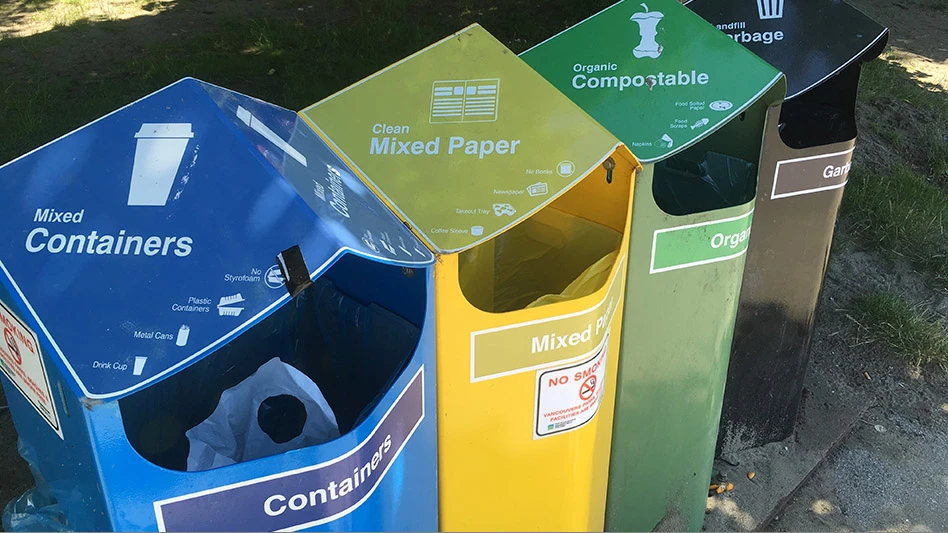Positive outlooks on pricing combined with concerns about adequate supply have become a recurring source of conversation in many basic materials markets.
The copper industry and its scrap suppliers sometimes express such reservations, as do some producers and suppliers in the steel and paper industries.
Such concerns are not absent from the aluminum market, but pricing that is somewhat less volatile and viewpoints that scrap supplies quickly fall into balance with demand are more common.
Many of the presenters and attendees at the Platts Aluminum Symposium 2011, held in mid-January in Southern California, exchanged information on how the aluminum market is shaping up heading into a new year.
CHINA, AND THE REST
Something the aluminum industry has in common with other basic materials sectors is the emergence of China as the dominant geographical player in the past 15 years.
As part of a presentation at the Platts event, Timothy D. Reyes, president of Alcoa Materials Management, Knoxville, Tenn., provided some context to China’s leading role.
Out of 44.5 million metric tons of primary aluminum expected to be consumed in 2011, manufacturers in China will consume 19 million metric tons of it—about 42 percent of the world total.
China’s ability to produce primary aluminum has nearly kept pace. An Alcoa analysis pegs China’s primary aluminum production capacity as of November 2010 as standing at more than 18.2 million tons annually.
However, according to Reyes and several sources he cited for the information offered in his presentation, many of China’s smelters are high-cost facilities and many are also running into energy supply and environmental issues.
Energy rationing and environmental concerns have each caused some smelters in China to shut down for periods of time by government edict. This trend was particularly borne out in the second half of 2010, when China’s primary aluminum production fell from an annual rate of 17.3 million metric tons to an annual rate of 14.5 million metric tons in November.
While these conditions have caused manufacturers in China to scramble for finished aluminum at times, it has not slowed down the nation’s hunger for the material.
China’s hunger to produce aluminum also has been apparent in its appetite for aluminum scrap. In the first eight months of 2010, of the 1.25 million metric tons of aluminum scrap exported from the United States, some 780,000 metric tons of it (62 percent) was shipped to China, according to the United States Geological Survey (USGS).
That figure not only leaves other nations far behind as volume destinations, but it also far outweighs how much finished aluminum is shipped from the United States to China (about 26,000 metric tons).
THE HOME FRONT
Using primary aluminum as a yardstick, aluminum consumption in the United States will only be about 30 percent of China’s consumption in 2011, according to the Alcoa analysis.
But aluminum remains a wanted commodity in the United States, and major sectors that absorb large amounts of secondary aluminum and aluminum scrap are poised to increase their appetites in 2011.
The automotive sector appears to be in the midst of a rebound that will see automotive production and sales increase in 2011, and makers of aluminum packaging seem more determined than ever to collect more used beverage containers (UBCs).
Seen as a percentage of overall aluminum production, secondary production methods gained market share in the United States between 2006 and 2010. In 2006, according to the USGS, primary smelters made some 2.28 million metric tons of aluminum in the United States compared to 1.26 million tons of secondary production—a 64:36 ratio.
In 2010, the primary production figure slid to 1.72 million metric tons, while secondary producers made 1.12 million tons, for a 61:39 ratio. Between secondary consumption and scrap exporting, the USGS calculates that some 2.7 million tons of aluminum scrap was collected in the United States in 2010. The agency further breaks that down to say that “about 59 percent came from new (manufacturing) scrap and 41 percent from old scrap (discarded aluminum products).”
The recession of the previous several years took its toll on primary production in the United States, with the USGS noting that two United States smelters—the former Eastalco/Alcoa plant in Frederick, Md., and a former Alcoa facility in Badin, N.C.—were in differing stages of demolition work. Among secondary smelter operators, Aleris International Inc., Beachwood, Ohio, has reported a $54 million net income in its most recently completed quarter, compared to a loss of $23 million in the same quarterly time frame one year earlier.
In its recycling and specification alloys division, Aleris says its year-on-year income growth of $7 million was “due primarily to volume increases resulting from the higher North American auto build rates benefiting our specification alloy business and generally higher recycling activities associated with increased industrial production.”
SECTOR ANALYSIS
The automotive sector in North America is largely considered to be on the rebound in terms of vehicle production and sales. A presentation from the Aluminum in Transportation Group (ATG) of the Aluminum Association provided reasons why that is good news for the aluminum industry. The presentation was given by Jack Pell and J.D. Rutt of aluminum producer Hydro on behalf of the ATG.
Makers of aluminum and alumunum components have made successful inroads with automakers for the past 40 years, and the ATG sees them continuing to do so for the next 10 years.
According to ATG—citing a study by Ducker Worldwide—the average American-made automobile contained just 77 pounds of aluminum in 1975, for just 2.1 percent of its overall weight.
Both the weight and percentage figures have risen steadily since then. By 1990, the average vehicle was 5 percent aluminum by weight. And 2010 model-year cars contain an average of 334 pounds of aluminum for an 8.8 percent figure. The gains have not been a matter of one or two shifts in thinking. Instead, aluminum has become a material of choice or an option in a number of components and parts: wheels, engine blocks, brake components, exterior closure panels, windshield surround structures and heat exchangers, to name a few.
The Ducker forecast has aluminum gaining another 60 pounds by weight for the 2020 model-year vehicles for an 11.3 percent figure.
Should the federal government continue on its current path to mandate improvements in fuel mileage, this could let the aluminum industry further improve its automotive market share. “Weight reduction will be part of the solution to meet the new regulation bench marks,” according to Pell and Rutt’s presentation, and “aluminum already offers great weight savings for less CO2 than competing materials.”
Recyclability and weight reduction have also kept aluminum in the game in the beverage container market.
In his presentation at the Platts Aluminum Symposium 2011 event, Gary Curtis of Wise Recycling, Linthicum Heights, Md., noted that “green is in,” and both beverage bottlers and aluminum can makers are seeking to improve the used beverage container (UBC) recycling rate.
Although the industry’s ability to recover some grades of aluminum scrap may have peaked, “UBCs will be the one area where availability will improve,” predicted Curtis.
Presenter Jean-Marc Germain, president of Novelis North America also says he sees aluminum gaining favor as a material in the packaging sector, citing “growing awareness of environmentalism and demand for recyclable products.”
In his presentation, Alcoa’s Reyes also referred to aluminum’s “superior use phase characteristics and recyclability.” Added Reyes, speaking to fellow industry leaders, “The industry needs alignment on promotion of the total life cycle attributes of our product.”
Whether the story for aluminum in 2011 will be an overwhelmingly positive one remains to be seen. Several indicators seem to be pointing, however, to an industry that enjoys growth opportunities and also has a hunger for the scrap it generates.
The author is editor-in-chief of Recycling Today and can be contacted at btaylor@gie.net.

Explore the February 2011 Issue
Check out more from this issue and find your next story to read.
Latest from Recycling Today
- Massive Chinese steelmaking rebound recorded in March
- LME looks into sustainable metal pricing
- OnePlanet Solar Recycling closes $7M seed financing round
- AMCS launches AMCS Platform Spring 2025 update
- Cyclic Materials to build rare earth recycling facility in Mesa, Arizona
- Ecobat’s Seculene product earns recognition for flame-retardant properties
- IWS’ newest MRF is part of its broader strategy to modernize waste management infrastructure
- PCA reports profitable Q1





